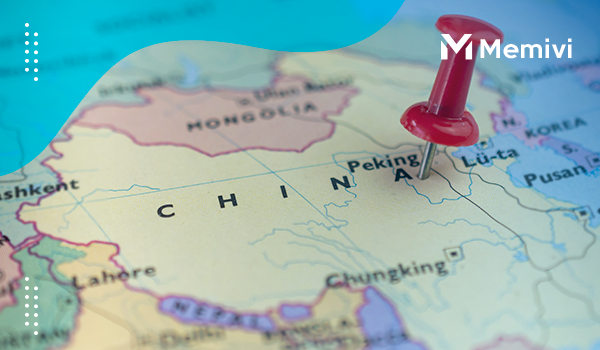
Understanding China’s influence on the US economy in 2025 is crucial for businesses and policymakers. By examining economic interdependence, technological innovations, policy changes, and making future predictions, one can uncover the myriad ways these factors shape bilateral relations. This analysis aims to shed light on potential impacts and strategies moving forward.
Economic Interdependence and Trade Dynamics
The relationship between China and the US is deeply rooted in economic interdependence. This connection manifests through an intricate web of trade dynamics that both countries nurture for mutual benefits.
Trade Agreements are a cornerstone of this relationship, facilitating the exchange of goods and services while shaping the global market.
China’s role as a major supplier of manufactured goods to the US illustrates the significance of these trade dynamics. American companies benefit from lower production costs, but this dependency also presents vulnerabilities. Fluctuations in trade agreements or political tensions could disrupt these interactions.
The US economy relies on critical components imported from China, which are essential in industries such as technology and electronics. This highlights how interconnected supply chains have become. Both nations must strategically manage these links to prevent potential disruptions.
International trade policies impact the dynamics significantly. Tariffs, for example, can alter market conditions, influencing pricing and availability of products. The need for a balanced approach in policy-making is vital to ensure continued prosperity.
Moreover, consumer demand in the US influences China’s manufacturing output, showcasing a reciprocal relationship. As such, shifts in consumer behavior or economic conditions in either country can ripple through to impact the other.
The rise of new markets and growth in emerging economies add another layer to these dynamics. China’s expanding influence in Asia and Africa could reshape global trade patterns, potentially affecting American economic strategies.
Technological Innovations and Market Shifts

The rapid pace of technological innovations is reshaping global markets, and this is particularly evident when observing the interplay between China and the US. China’s advancements in areas such as artificial intelligence, telecommunications, and renewable energy are not only setting new standards but also shifting the focus of global economic activities.
One of the most significant shifts involves the production and proliferation of 5G technology. Chinese firms have taken a leading role in this space, challenging US companies to accelerate their own innovations to maintain a competitive edge. This competition fosters rapid technological development, yet also creates a complex web of market dynamics.
In addition to tech, the rise of China’s e-commerce giants like Alibaba and JD.com has prompted a shift in retail patterns, both domestically and internationally. These companies serve increasingly global audiences, gradually influencing shopping habits and distribution networks across the US and beyond.
The impact of technological progress is also deeply felt in sectors such as electric vehicles, where Chinese manufacturers are becoming dominant players. This is disrupting traditional automotive markets and pushing US companies towards more sustainable technological solutions.
As both countries invest heavily in clean energy technologies, new opportunities and challenges arise. While competition is fierce, there’s also potential for collaboration in areas like carbon reduction technologies and smart grid innovations. These shifts are setting a new trajectory for global energy markets.
Ultimately, these technological and market changes require companies in both countries to continuously adapt while policymakers strive to manage and anticipate these transformations’ impact. This evolving landscape marks a significant era for US-China economic relations as they navigate an interconnected, technology-driven future.
Policy Changes and Financial Regulations
The influence of China on policy changes and financial regulations within the US is profound and continues to evolve. As China strengthens its position as a global economic power, the ripple effects are felt in various sectors including financial regulations. US policymakers need to adapt to competitive pressures and global economic trends spearheaded by China’s growth.
The US may find itself enacting new policies that address the growing technological advancements and financial strategies emerging from China. As these policies take shape, considerations such as trade balances, currency exchange stability, and the competitiveness of US industries against a rising Chinese market become critical.
The dynamic between the US and China often leads to policy adjustments that impact not only financial regulations but also broader economic strategies. Both countries are engaged in a delicate dance of economic diplomacy, which demands constant adaptation to new challenges and opportunities presented by each other’s economic movements. Consequently, policy changes and financial regulations in the US are often responses to China’s economic strategies, pushing for increased scrutiny and agility in financial governance.
Future Predictions and Strategic Impacts
The influence of China on the US economy in 2025 could lead to significant strategic impacts. Predicting the future requires examining several factors that are likely to evolve over time. One area of interest is the balance of trade. As economic interdependence grows, both countries may experience shifts in exporting goods like electronics, machinery, and agricultural products. These changes could redefine trade policies and economic partnerships.
In 2025, technological advancements may play a crucial role. Innovation in areas such as AI, renewable energy, and telecommunications might affect market positions. US companies may need to adapt to remain competitive, which involves adjusting strategies to align with the rapid pace of technological progress.
Policy Adaptation
Changes in government policies and financial regulations in either country could have far-reaching implications. For example, increased tariffs or stricter trade agreements might alter the economic landscape shaped by Chinese-American relations. Companies could face challenges in compliance, forcing them to recalibrate their financial and operational strategies.
Another relevant factor is the strategic investments made by both nations in each other’s economies. China’s investment in American infrastructure, technology sectors, or start-ups could enhance economic ties. Conversely, US investments in China can fuel growth, leading to potential geopolitical and economic shifts.
Understanding these dynamic relationships and predicting their future impact is crucial for businesses and policymakers. Strategic foresight allows for adaptive measures, ensuring resilience and sustained growth amid an evolving economic backdrop.


 The Ultimate Guide to Budgeting in the U.S.: How to Take Control of Your Money Without Feeling Restricted <p class='sec-title' style='line-height: normal; font-weight: normal;font-size: 16px !important; text-align: left;margin-top: 8px;margin-bottom: 0px !important;'> Are you tired of living paycheck to paycheck? Welcome to the ultimate guide to budgeting in the U.S. </p>
The Ultimate Guide to Budgeting in the U.S.: How to Take Control of Your Money Without Feeling Restricted <p class='sec-title' style='line-height: normal; font-weight: normal;font-size: 16px !important; text-align: left;margin-top: 8px;margin-bottom: 0px !important;'> Are you tired of living paycheck to paycheck? Welcome to the ultimate guide to budgeting in the U.S. </p>  The Hidden Costs of American Life: Subscription Creep, Fees, and Everyday Expenses You Can Cut Right Now <p class='sec-title' style='line-height: normal; font-weight: normal;font-size: 16px !important; text-align: left;margin-top: 8px;margin-bottom: 0px !important;'> The Hidden Costs of American Life reveal surprising expenses many don't foresee. </p>
The Hidden Costs of American Life: Subscription Creep, Fees, and Everyday Expenses You Can Cut Right Now <p class='sec-title' style='line-height: normal; font-weight: normal;font-size: 16px !important; text-align: left;margin-top: 8px;margin-bottom: 0px !important;'> The Hidden Costs of American Life reveal surprising expenses many don't foresee. </p>  Financial Minimalism: The U.S. Trend That Leads to True Financial Freedom <p class='sec-title' style='line-height: normal; font-weight: normal;font-size: 16px !important; text-align: left;margin-top: 8px;margin-bottom: 0px !important;'> Embrace financial minimalism to simplify your life and gain control over your financial future </p>
Financial Minimalism: The U.S. Trend That Leads to True Financial Freedom <p class='sec-title' style='line-height: normal; font-weight: normal;font-size: 16px !important; text-align: left;margin-top: 8px;margin-bottom: 0px !important;'> Embrace financial minimalism to simplify your life and gain control over your financial future </p>